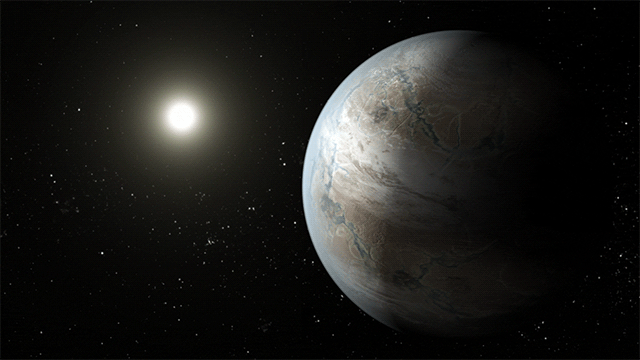Fox News Flash top headlines for November 8
Fox News Flash top headlines are here. Check out what's clicking on Foxnews.com.
More than 4,500 exoplanets have been discovered so far, with only a small portion thought to have the properties to contain life. A new study suggests that the galaxy may actually contain 300 million planets capable of supporting life.
The research analyzed data from the Kepler space telescope and found approximately half the stars that have a similar temperature to the sun -- plus or minus up to 1,500 degrees Fahrenheit -- could also be orbited by rocky planets with liquid water on their surfaces.
"Kepler already told us there were billions of planets, but now we know a good chunk of those planets might be rocky and habitable," said the study's lead author, Steve Bryson, in a statement. "Though this result is far from a final value, and water on a planet's surface is only one of many factors to support life, it's extremely exciting that we calculated these worlds are this common with such high confidence and precision."

This illustration depicts one possible appearance of the planet Kepler-452b, the first near-Earth-size world to be found in the habitable zone of a star similar to our Sun. Credits: NASA Ames/JPL-Caltech/T. Pyle
EXTRATERRESTRIAL LIFE ON THE CLOSEST 1,000 STARS TO EARTH COULD SEE US: EXPERTS
The Kepler space telescope, which was launched in 2009, was retired in 2018 after it ran out of fuel.
The new study, which is slated to be published in The Astronomical Journal, looked at the relationship between the temperature of the star and the light an orbiting planet absorbed, expanding the scope of researchers.
"We always knew defining habitability simply in terms of a planet's physical distance from a star, so that it's not too hot or cold, left us making a lot of assumptions," said study co-author Ravi Kopparapu. "Gaia's data on stars allowed us to look at these planets and their stars in an entirely new way."
"Not every star is alike," Kopparapu added. "And neither is every planet."
24 POTENTIAL 'SUPERHABITABLE' PLANETS DISCOVERED CLOSE TO EARTH
In their findings, the researchers also said there are "at least four" potentially habitable exoplanets within 20 to 30 light-years from Earth. A light-year, which measures distance in space, is approximately 6 trillion miles.
"To me, this result is an example of how much we've been able to discover just with that small glimpse beyond our solar system," Bryson, a researcher at NASA Ames Research Center, added. "What we see is that our galaxy is a fascinating one, with fascinating worlds, and some that may not be too different from our own."
In October, a separate group of researchers discovered 24 potential "superhabitable" planets that may have conditions more suited to host life.
